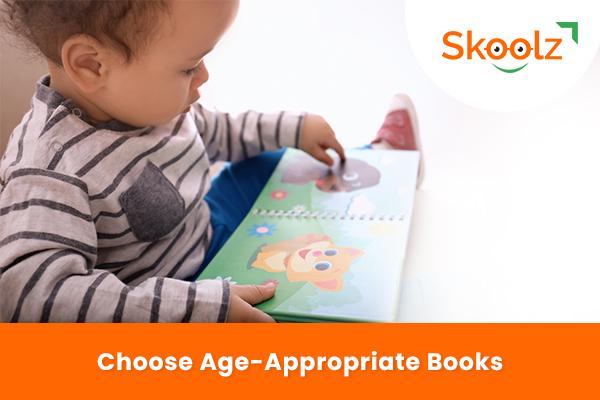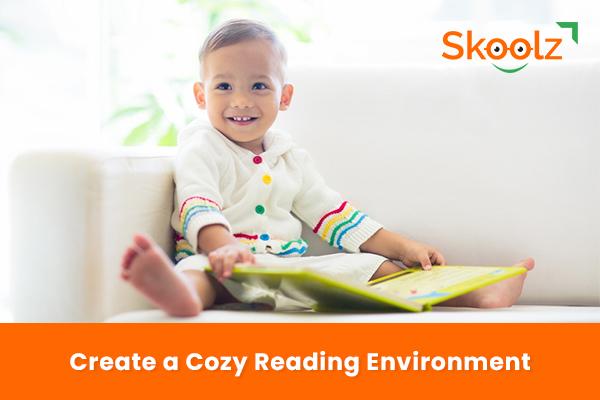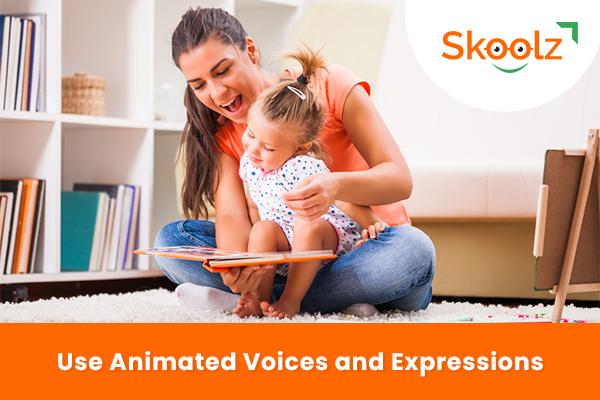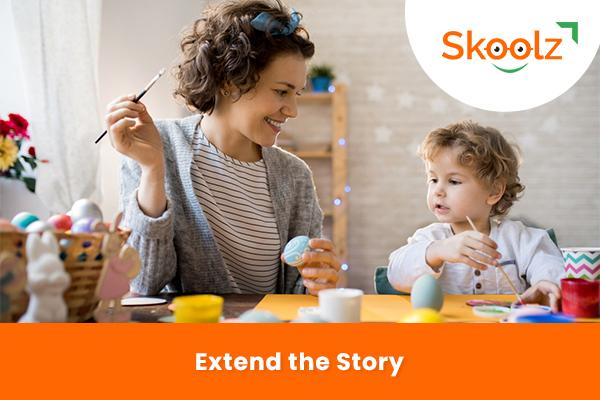
Engaging Toddlers in Storytime: Ages 2-3
Engaging Toddlers in Storytime: Ages 2-3
Storytime is a wonderful opportunity to spark your toddler's imagination, enhance their language skills, and foster a love for books. At the age of 2 to 3, toddlers are actively exploring the world around them and developing their language abilities. In this blog, we will explore strategies for engaging toddlers in storytime, making it a fun and interactive experience for both parent and child.
1. Choose Age-Appropriate Books:

Select books that are specifically tailored to the interests and comprehension levels of toddlers. Look for books with colorful illustrations, simple and repetitive text, and relatable themes. Board books or books with sturdy pages are ideal for this age group.
2. Create a Cozy Reading Environment:

Set up a cozy and inviting space for storytime. This can be a comfortable chair, a soft blanket, or a special reading nook. Make it a routine to gather in this dedicated space whenever it's time for storytime, creating a sense of anticipation and excitement.
3. Use Animated Voices and Expressions:

Bring the characters and story to life by using animated voices and expressions while reading. Use different tones, pitches, and facial expressions to match the emotions and actions in the story. This will captivate your toddler's attention and make the storytelling experience more engaging.
4. Encourage Participation:

Involve your toddler in the story by encouraging their active participation. Ask questions about the pictures, characters, or events in the book. Prompt them to make predictions or describe what they see. This not only boosts their comprehension skills but also fosters their imagination and critical thinking.
5. Incorporate Interactive Elements:

Choose books that incorporate interactive elements such as lift-the-flap, touch-and-feel, or pop-up features. These interactive elements enhance engagement and sensory exploration, making the storytime experience more interactive and enjoyable for your toddler.
6. Extend the Story:

After reading the book, extend the story by engaging in related activities. This can include drawing pictures, acting out scenes, or even creating simple crafts inspired by the book. Encourage your toddler to retell the story in their own words or make up alternative endings, fostering their creativity and language development.
7. Make it a Regular Routine:

Consistency is key in fostering a love for reading. Make storytime a regular part of your daily routine. Set aside a specific time each day dedicated to reading books with your toddler. This repetition and consistency create a sense of structure and anticipation, making storytime a cherished activity.
FAQs:
Q1: What if my toddler loses interest or becomes restless during storytime?
A: Toddlers have short attention spans, so it's normal for them to become restless or lose interest during storytime. Try to choose shorter books or break the story into smaller segments. Engage them by asking questions, encouraging participation, or incorporating interactive elements. If needed, follow your child's cues and take breaks when necessary, gradually increasing the duration as their attention span improves.
Q2: How many books should I read during each storytime session?
A: The number of books you read during each session depends on your toddler's attention span and interest level. Start with one or two books and observe their engagement. You can gradually increase the number of books as their attention span develops. Remember, quality and engagement matter more than quantity.
Q3: What if my toddler prefers certain books and doesn't show interest in others?
A: Every child has their preferences. If your toddler consistently shows disinterest in certain books, try to explore different themes, styles, or authors to find what captures their attention. Visit libraries or bookstores together to allow them to choose books that pique their interest. It's important to respect their preferences while also introducing new books to expand their reading experiences.
Q4: Should I read the same book repeatedly or introduce new ones each time?
A: Both approaches have their benefits. Repetition helps toddlers become familiar with the story, language patterns, and vocabulary. It also allows them to predict and participate more actively. However, introducing new books exposes them to a variety of themes, styles, and vocabulary. Strike a balance by incorporating a mix of familiar and new books into your storytime routine.
Q5: What if my toddler wants to skip pages or rush through the story?
A: Toddlers often have their own pace and may want to skip pages or rush through the story. Allow them some control and autonomy during storytime. However, gently encourage them to follow along and engage with the story. If they are consistently rushing, try to choose books with shorter texts or books that offer more opportunities for engagement through pictures and illustrations.
Conclusion:
Engaging toddlers in storytime is a wonderful way to nurture their language development, imagination, and love for books. By selecting age-appropriate books, creating a cozy reading environment, using animated voices, encouraging participation, incorporating interactive elements, extending the story through related activities, and making it a regular routine, you can create a delightful and enriching storytime experience for your 2 to 3-year-old. Enjoy the journey of storytelling and watch as your toddler's language skills and love for reading flourish.

Swati Sahu
Digital Marketer

Engaging Toddlers in Storytime: Ages 2-3
Storytime is a wonderful opportunity to spark your toddler's imagination, enhance their language skills, and foster a love for books. At the age of 2 to 3, toddlers are actively exploring the world around them and developing their language abilities. In this blog, we will explore strategies for engaging toddlers in storytime, making it a fun and interactive experience for both parent and child.
1. Choose Age-Appropriate Books:

Select books that are specifically tailored to the interests and comprehension levels of toddlers. Look for books with colorful illustrations, simple and repetitive text, and relatable themes. Board books or books with sturdy pages are ideal for this age group.
2. Create a Cozy Reading Environment:

Set up a cozy and inviting space for storytime. This can be a comfortable chair, a soft blanket, or a special reading nook. Make it a routine to gather in this dedicated space whenever it's time for storytime, creating a sense of anticipation and excitement.
3. Use Animated Voices and Expressions:

Bring the characters and story to life by using animated voices and expressions while reading. Use different tones, pitches, and facial expressions to match the emotions and actions in the story. This will captivate your toddler's attention and make the storytelling experience more engaging.
4. Encourage Participation:

Involve your toddler in the story by encouraging their active participation. Ask questions about the pictures, characters, or events in the book. Prompt them to make predictions or describe what they see. This not only boosts their comprehension skills but also fosters their imagination and critical thinking.
5. Incorporate Interactive Elements:

Choose books that incorporate interactive elements such as lift-the-flap, touch-and-feel, or pop-up features. These interactive elements enhance engagement and sensory exploration, making the storytime experience more interactive and enjoyable for your toddler.
6. Extend the Story:

After reading the book, extend the story by engaging in related activities. This can include drawing pictures, acting out scenes, or even creating simple crafts inspired by the book. Encourage your toddler to retell the story in their own words or make up alternative endings, fostering their creativity and language development.
7. Make it a Regular Routine:

Consistency is key in fostering a love for reading. Make storytime a regular part of your daily routine. Set aside a specific time each day dedicated to reading books with your toddler. This repetition and consistency create a sense of structure and anticipation, making storytime a cherished activity.
FAQs:
Q1: What if my toddler loses interest or becomes restless during storytime?
A: Toddlers have short attention spans, so it's normal for them to become restless or lose interest during storytime. Try to choose shorter books or break the story into smaller segments. Engage them by asking questions, encouraging participation, or incorporating interactive elements. If needed, follow your child's cues and take breaks when necessary, gradually increasing the duration as their attention span improves.
Q2: How many books should I read during each storytime session?
A: The number of books you read during each session depends on your toddler's attention span and interest level. Start with one or two books and observe their engagement. You can gradually increase the number of books as their attention span develops. Remember, quality and engagement matter more than quantity.
Q3: What if my toddler prefers certain books and doesn't show interest in others?
A: Every child has their preferences. If your toddler consistently shows disinterest in certain books, try to explore different themes, styles, or authors to find what captures their attention. Visit libraries or bookstores together to allow them to choose books that pique their interest. It's important to respect their preferences while also introducing new books to expand their reading experiences.
Q4: Should I read the same book repeatedly or introduce new ones each time?
A: Both approaches have their benefits. Repetition helps toddlers become familiar with the story, language patterns, and vocabulary. It also allows them to predict and participate more actively. However, introducing new books exposes them to a variety of themes, styles, and vocabulary. Strike a balance by incorporating a mix of familiar and new books into your storytime routine.
Q5: What if my toddler wants to skip pages or rush through the story?
A: Toddlers often have their own pace and may want to skip pages or rush through the story. Allow them some control and autonomy during storytime. However, gently encourage them to follow along and engage with the story. If they are consistently rushing, try to choose books with shorter texts or books that offer more opportunities for engagement through pictures and illustrations.
Conclusion:
Engaging toddlers in storytime is a wonderful way to nurture their language development, imagination, and love for books. By selecting age-appropriate books, creating a cozy reading environment, using animated voices, encouraging participation, incorporating interactive elements, extending the story through related activities, and making it a regular routine, you can create a delightful and enriching storytime experience for your 2 to 3-year-old. Enjoy the journey of storytelling and watch as your toddler's language skills and love for reading flourish.

Swati Sahu
Digital Marketer




